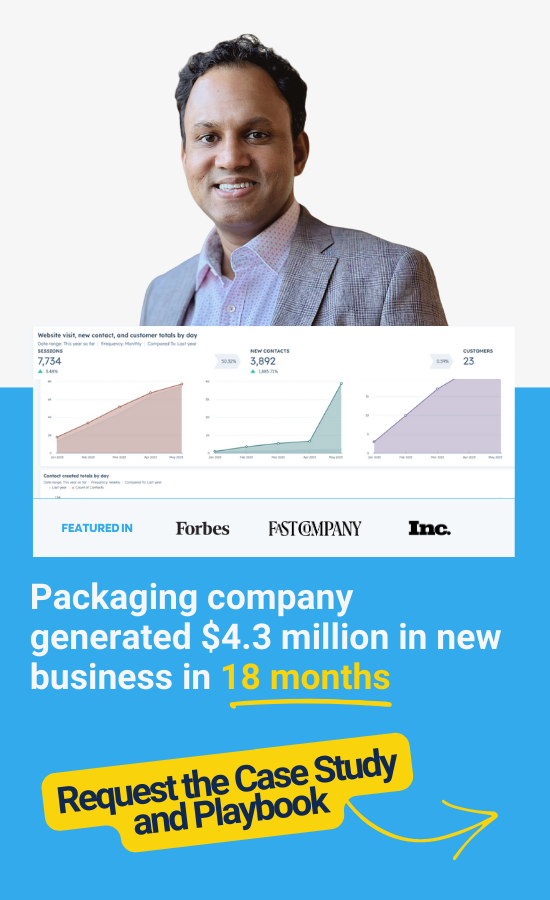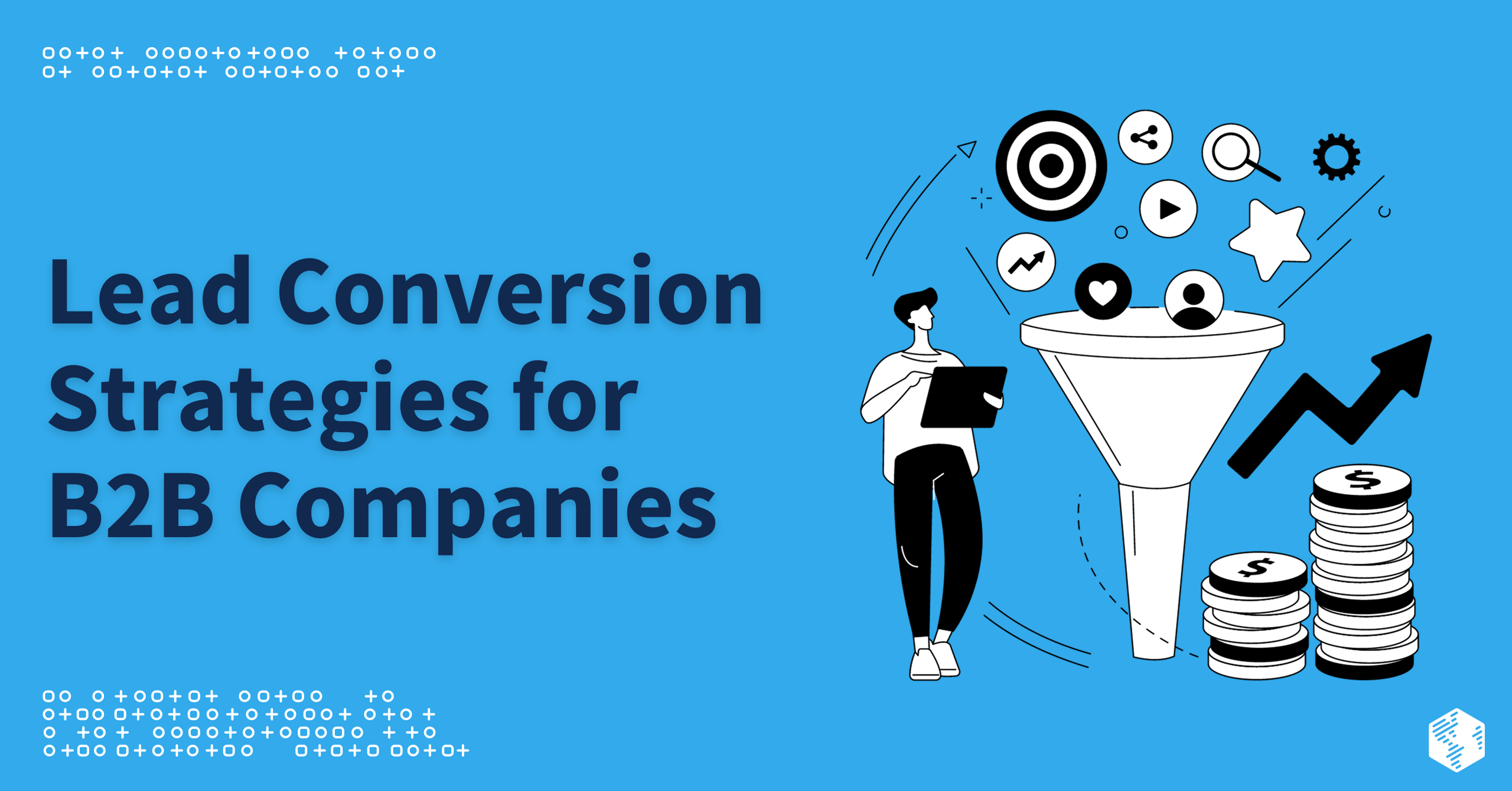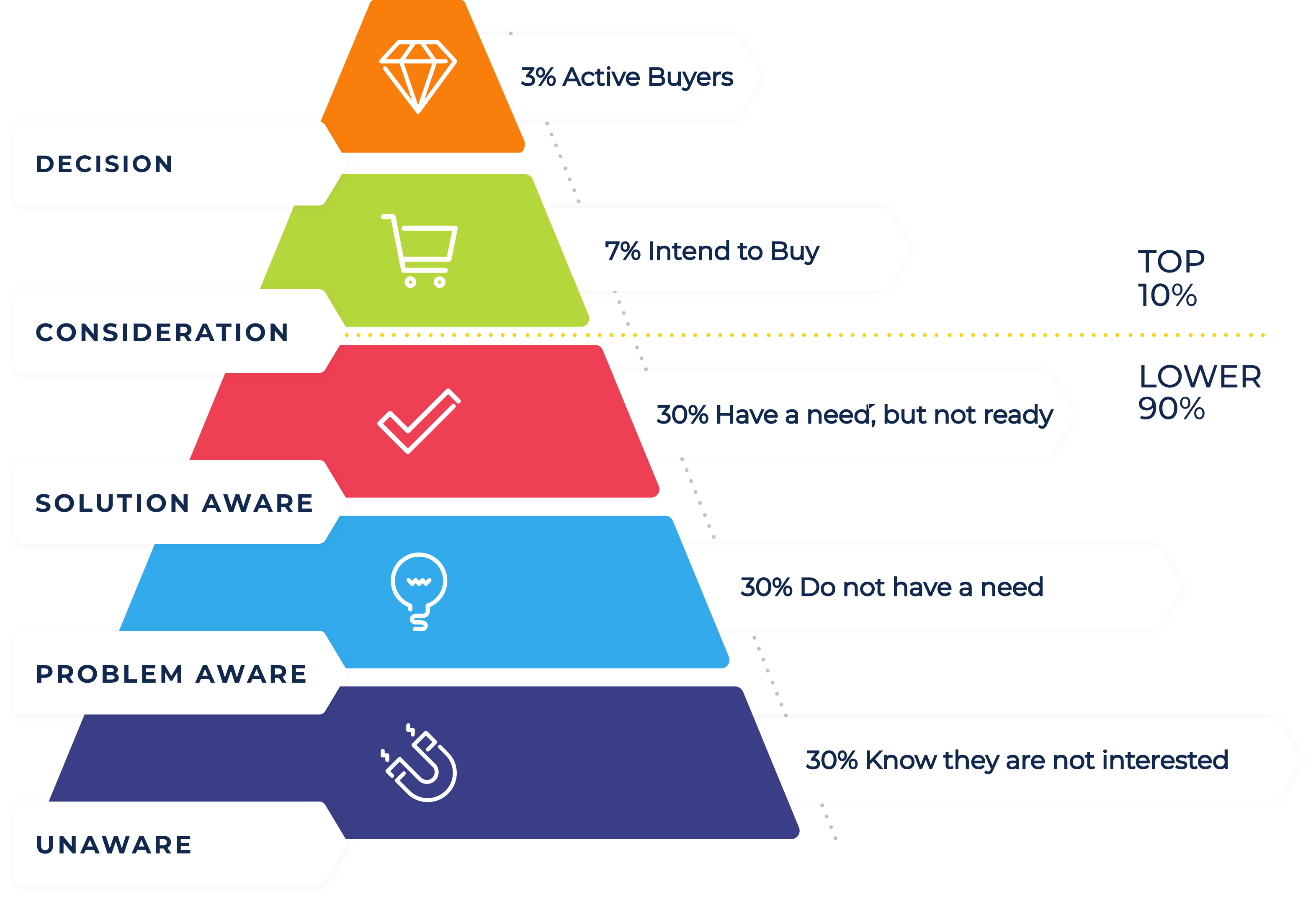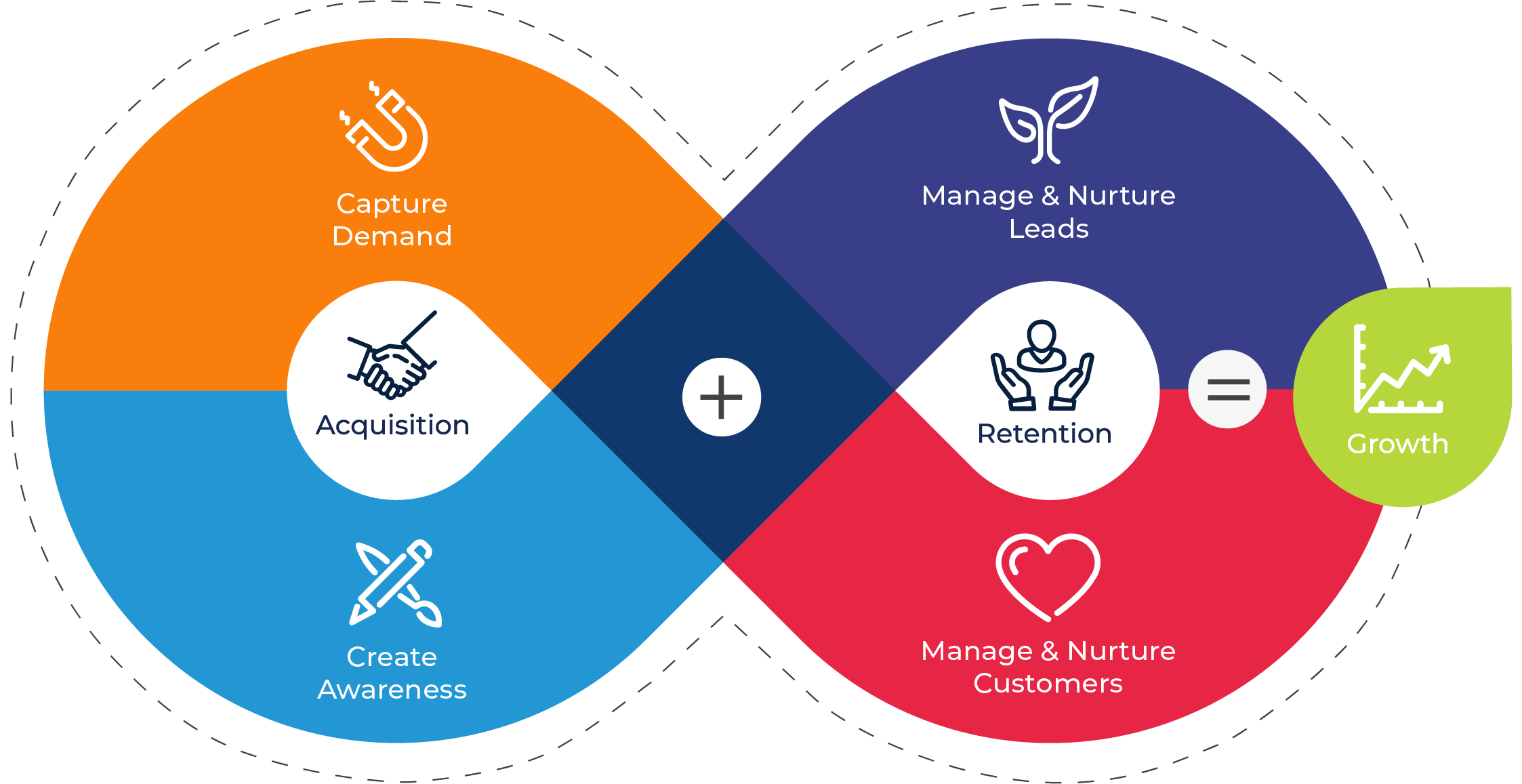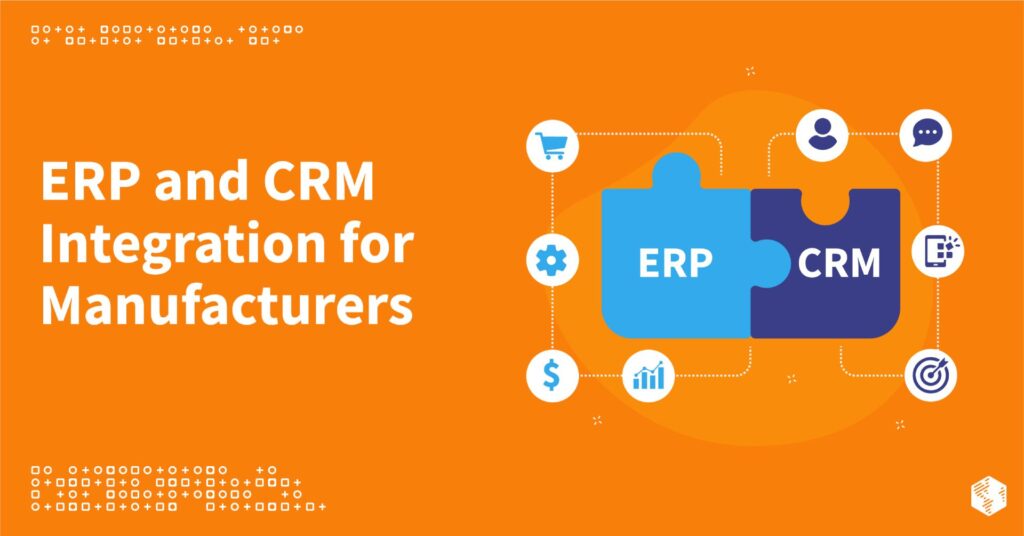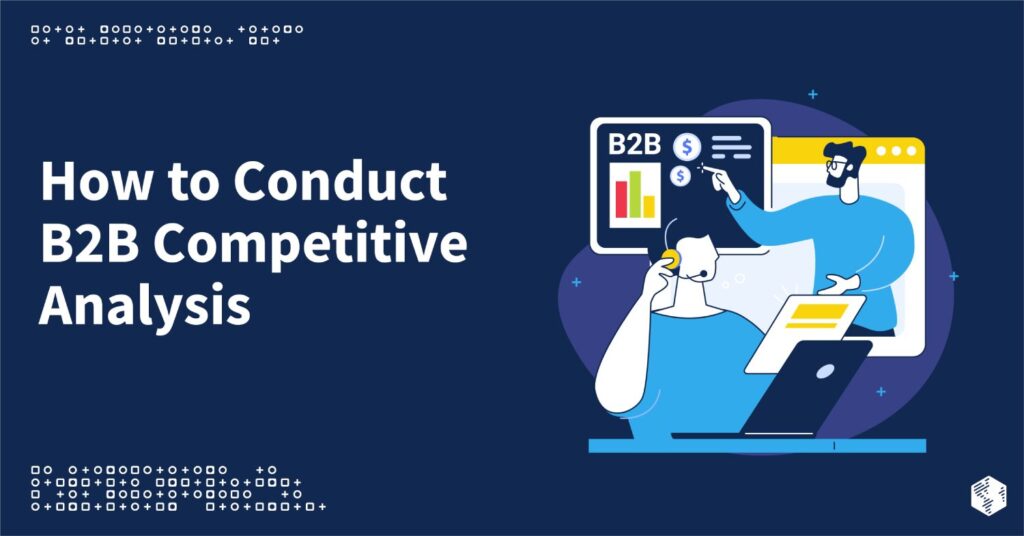How many of your ideal customers are, right now, browsing the internet, looking for a solution to their pain points that your business can provide?
It’s your job to capture their attention, nurture them, and convert them into paying customers.
The business-to-business (B2B) lead conversion process involves a variety of techniques and strategies designed to convert leads into buyers. In today’s competitive B2B landscape, the most successful businesses are those that create and implement a lead conversion strategy.
Let’s explore lead conversion and the different tactics B2B organizations can use to increase conversion rates.
What Is Lead Conversion?
Lead conversion is the process of converting prospects into customers. While lead generation refers to turning visitors into leads, lead conversion is about turning those leads into buyers.
Converting leads into customers is a critically important part of any B2B revenue and growth strategy and directly impacts the bottom line. By focusing efforts on turning leads into buyers, businesses can generate more revenue, increase their customer base, and achieve sustainable growth.
If your B2B company wants to increase revenue and grow predictably, you must prioritize strategies that turn leads into loyal customers and increase conversion rates.
The B2B Lead Conversion Process
The stages of the lead conversion process align closely with the B2B buyer’s journey. To increase the likelihood that a lead will convert, it’s essential to tailor strategies and approaches to each stage.
The Awareness Stage (Strangers to Visitors)
During the first stage, potential buyers become aware of their pain points and start looking for more information about their problem.
The Consideration Stage (Visitors to Leads)
In the second stage, potential buyers consider different solutions and providers, compare options, and weigh the pros and cons of each product or service to see if it aligns with their needs.
The Decision Stage (Leads to Customers)
In the third stage, buyers make a purchasing decision, selecting the product or service and provider that they believe is the best fit for their original problem.
The Delight Stage (Customers to Brand Ambassadors)
During the fourth stage, the customer delights in their purchasing decision and, thanks to a seamless customer experience, becomes a loyal ambassador for the brand.
Lead Conversion Strategies & Best Practices for B2B Companies
By following these lead conversion best practices and strategies, your business can engage with your ideal customers, generate more qualified leads, optimize lead conversion efforts, and grow your base of loyal, paying customers.
Research & Identify Your Target Audience
Identify your target audience and create buyer personas and ideal customer profiles (ICPs). Determine who they are, what they need, what their pain points are, and how you can best meet their needs and solve their problems.
This research will help guide your lead conversion strategy and ensure you are equipped to reach your ideal customers in the right place, in the right way, and at the right time.
Optimize Your Website & Landing Pages
Your business website is your digital storefront, and driving organic is vital. Invest in search engine optimization (SEO) strategies to optimize your website and landing pages, increase your online visibility, generate more traffic, and drive qualified leads to your website—ones who will be most likely to convert.
Create Valuable, Relevant, & Engaging Content
Content is king in the B2B world, but there’s more to it than writing blog articles or posting on socials. The key is to develop content that is valuable, relevant, shareable in order to capture attention, engage with prospects, nurture leads, and convert them into buyers.
Produce blogs, white papers, landing pages, videos, ebooks, and case studies that address the needs and pain points of your target audience. Tailor content for each stage of the buyer’s journey across the sales funnel. When you offer valuable, relevant, and engaging content to your audience, you will start generating and converting more leads.
Develop Tailored Email Marketing Campaigns
Personalized, tailored email marketing campaigns are powerful lead conversion tools for B2B marketers and sales professionals. By building an email list, providing valuable content, and sending timely messages that offer solutions to the pain points of your prospects, your organization can increase the chances that leads will convert.
Don’t forget about follow-up emails, either. These personalized campaigns keep leads engaged throughout the sales funnel and support your lead conversion efforts.
Engage with Your Target Audience on Social Media
Where does your target audience spend their time on social media? Identify the platforms they are most active on and develop a lead nurturing and engagement strategy that allows you to connect and engage with leads. Sharing valuable content, answering questions, and building relationships via social media establishes your brand as trustworthy and responsive and will encourage leads to convert into paying customers.
Leverage Marketing Automation Tools
Marketing automation saves time and resources throughout the B2B lead conversion process. Your business can leverage marketing automation tools to score leads, complete repetitive tasks, personalize communications, streamline lead nurturing, and deliver targeted content—all valuable pieces of the lead conversion puzzle.
Automated marketing and customer relationship management (CRM) platforms help you identify the most promising leads so you can focus on those, increasing conversion rates.
Track & Analyze Key Metrics
To optimize your B2B lead conversion strategy, track and analyze metrics, including the lead conversion rate, cost per lead, click-through rate, and customer acquisition cost. These key performance indicators (KPIs) will allow you to monitor the progress you are making, determine which tactics return the highest investment, and identify areas that need improvement.
With this data in hand, you can make changes and adjustments to optimize your lead conversion strategy.
13 Ways to Increase Lead Conversion Rates
A business’s lead conversion rate measures how many leads move through the funnel and become paying customers. Higher lead conversion rates indicate increased revenue and business growth.
Use these tactics to increase lead conversion rates for your B2B company.
Make Sure Your Website Is User-Friendly
Buyers are more likely to make a purchase from a brand that has a website that is accessible, easy to read and navigate, and user friendly. Make sure your B2B web pages are accessible on mobile devices, load quickly, have clear navigation, are highly readable, and include clear calls to action (CTAs).
Focus on Benefits & Solutions
While nurturing leads, focus content, communications, and conversations on how your B2B products or services will benefit their business and solve their pain points. Benefits and solutions are the true selling points, and highlighting these areas will provide leads with reasons to convert.
Target High-Quality Leads with Account-Based Marketing
Generating as many leads as possible is not always the most effective plan on its own. In addition to lead generation, incorporate an account-based marketing (ABM) strategy into your lead conversion efforts.
ABM focuses on targeting high-quality leads with personalized campaigns, ensuring your marketing and sales teams are spending the most time on the leads that are most likely to convert into paying customers.
Personalize Content & Offers
Personalization is one of the best ways to engage buyers, nurture leads, and convert them into customers.
When you tailor content and create personalized offers for qualified leads, your prospects feel listened to and understood. Automatically include names in email campaigns, provide targeted content recommendations, segment contact lists, and deliver exclusive promotions based on previous behaviors. These actions go a long way.
Segment Leads & Contacts
A lead segmentation strategy makes it easier than ever to tailor your marketing and sales strategies to improve your lead nurturing efforts.
Segmenting leads involves grouping contacts into smaller segments based on shared characteristics, demographics, or behaviors. Categories for these distinct groups could include segments based on industry, role or title, location, company size and revenue, product or service interest, audience persona, lead source, or even conversion type. Then, after dividing leads into segments, you can engage them with relevant, timely content that speaks to their unique needs, preferences, and interests—increasing the chances of conversion.
Practice Behavioral Automation
Behavioral automation combines marketing automation tools and practices with buyer psychology and behavioral science to understand how and why buyers make decisions, how to craft a better customer experience, and how certain behaviors influence purchases.
This process involves collecting data on how leads engage with your business across channels, automatically segmenting audiences and content based on behavioral patterns, and analyzing behavioral triggers that lead to conversions. With this data in hand, you can create strategies and automate processes that increase customer lifetime value, the quality of leads, and your overall conversion rates.
Retarget Ads on Google & Social Platforms
B2B retargeting is the process of using paid ads on Google, social media, and other platforms to target users who have already shown interest in your products, services, or brand. After prospective buyers visit your website or click on one of your social profiles, you can target them with relevant ads that appear as they browse the internet.
By retargeting leads who already have some degree of interest in your business (because they have previously engaged with your website, social platforms, or content), you can focus your advertising budget and efforts on leads who have a higher likelihood of converting. Retargeting is especially valuable during the longer and more complex purchasing decision because it ensures your brand stays top-of-mind while various stakeholders take their time to make a decision.
Nurture Leads Across Multiple Channels
Prospective customers spend their time on a variety of channels and communication platforms, from email and LinkedIn to YouTube and podcasts—and don’t forget about offline channels like direct mail and events. Your goal should be to provide your target customers with relevant, engaging content and information across all the channels they use—each with the goal of directing leads toward conversion.
Multichannel lead nurturing ensures your brand stays at the forefront of your buyers’ minds, reaches new segments of your ideal audience, and builds strong, lasting relationships with leads.
Employ Chatbots & Live Chat Options
Fast, helpful responses to inquiries from leads and prospects are essential to a positive customer experience. Instead of requiring leads to fill out a form and wait for a reply or search through a knowledge base to find answers to their questions about your products or services, include a chatbot or live chat feature on your website so they can get instant responses to their inquiries.
Leads value the opinions of their peers—in this case, other businesses that have purchased your products or services. Customer success stories play a pivotal role in the lead conversion process and can move leads through the funnel toward making a purchase.
That means your past and current customers are valuable lead conversion resources. Ask them to share testimonials, leave reviews, and share case studies so you can use their feedback to build trust and credibility.
Align Marketing & Sales Teams
Effective lead conversion requires your marketing and sales teams to work together to increase conversions. Unfortunately, these departments are often siloed and disconnected. Consider implementing a revenue operations (RevOps) framework that breaks down organizational silos, aligns your sales and marketing teams, and supports your lead conversion strategy.
Host Webinars & Online Events
Webinars and other online events are a cost-effective way to showcase your expertise, increase brand recognition, establish credibility, educate prospects, and interact with leads. By hosting events and presentations online, your B2B company can reach a larger audience and engage directly with qualified leads.
Build Customer Loyalty & Referral Programs
In the B2B world, word-of-mouth (WOM) recommendations are everything—and can push your leads to convert. Create loyalty and referral programs that incentivize satisfied customers to become ambassadors for your brand and refer your business to others.
Leverage the Growth Formula Framework for Lead Conversion
A successful lead conversion strategy requires a comprehensive, data-driven approach. By implementing the proven tactics described in this article, your B2B company can increase lead conversion rates and drive revenue growth.
At OneIMS, we have a history of working with companies in a variety of industries to maximize revenue, acquire new buyers, and retain existing customers, and we pride ourselves on producing measurable and sustainable results that lead to long-term growth.
Our growth formula framework is designed to optimize revenue and support your growth goals. By optimizing your marketing and sales strategy using this proven formula, your company will be prepared to grow sustainably, convert qualified leads, and succeed in the competitive B2B landscape.
But you don’t have to take our word for it. View testimonials from our clients and read our blog to get an idea of our training, experience, and track record of success.
Are you ready to convert more leads and grow your business? Schedule a consultation with us today to get started.
